Scholars today don’t work alone. Every year, U of T faculty and students fan out across the globe to investigate new ideas and challenge existing ones, working with colleagues in more than a hundred countries, from Boston to Tokyo, São Paulo to Mumbai. And every year, the university welcomes students and faculty from around the world at each of its three campuses.
While it’s impossible to capture the scope of U of T’s international collaborations in a few pages, the eight stories that follow hint at their flavour. They show how U of T scholars, selected from every campus and a variety of faculties, are using their creativity and expertise to assess the impact of a warming Arctic, for example, or help build the world’s largest radio telescope or improve mental health among young people in low-income countries. There are more than 8,000 of these projects happening at the University of Toronto right now. Together, their impact is truly boundless.
Africa and the Middle East
Lights, Camera, Africa!
Julie MacArthur screens African films in Canada as a way of fostering a conversation about the challenges facing the continent
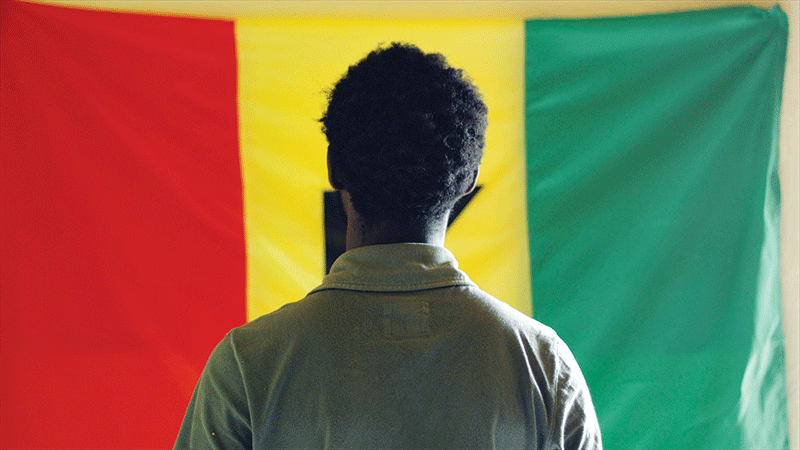
African countries release thousands of feature-length films a year. Nigeria alone has the second-largest film industry in the world, after India and ahead of the United States.
But almost none of these films ever get shown in North America, and that’s a shame, says Julie MacArthur, a history professor at U of T Mississauga. She notes that younger African filmmakers are creating personal, visually daring and intellectually engaged films that cast new light on topics such as identity and belonging, gender rights, sexuality, violence and social justice.
“So many of the images and narratives we receive about Africa come from a Western gaze, and they often reflect a very particular, and limited, viewpoint,” says MacArthur. “African filmmakers not only offer a different perspective, but provide a lens into the richly diverse experiences and stories from across the continent.”
In her academic work, MacArthur examines film as a principal means by which Africans compose, edit and consolidate their histories, and engage with contemporary issues and challenges facing the African continent. Recently awarded a federal research grant for a project focusing on what she calls the “new wave” of young African filmmakers, MacArthur is using the film medium to foster dialogue across cultures and regional boundaries. Through screenings, festivals, workshops, conferences and publications, she is exposing academic and mainstream Canadian audiences to African cinema and bringing young African directors to Canada to discuss issues raised in their films.
Grey Matter, for example, directed by Kivu Ruhorahoza, provides a powerful and poetic portrait of the Rwandan genocide without ever addressing the atrocity by name. Grey Matter, released in 2011, was the first feature film made by a Rwandan living in Rwanda. In a departure from other films depicting the genocide, Ruhorahoza wanted to portray the massacre and its aftermath in philosophical, psychological and personal dimensions, emphasizing the interior lives and shared traumas of those affected on all sides.
It is “a story of individuals and not heroism,” Ruhorahoza says of his film. “I did not want to make a war film… I wanted to focus on individuals to tell a story that is really big.”
Watch the trailer for Grey Matter
MacArthur first became involved in promoting African films as a graduate student in England. Since then, she has run film festivals and curated special exhibits across East Africa, Europe and in Canada, where she has programmed African short films for the Toronto International Film Festival. “Exposing global audiences to this new wave of filmmaking challenges how African cinema, and indeed Africa itself, is conceived,” says MacArthur. “It opens up new possibilities for public and academic engagement with the pressing social, political and historical questions facing the continent.” – Alice Taylor
A Digital Public Square
The Munk School of Global Affairs aims to give citizens of even the most repressive regimes the online tools they need to hold their governments to account
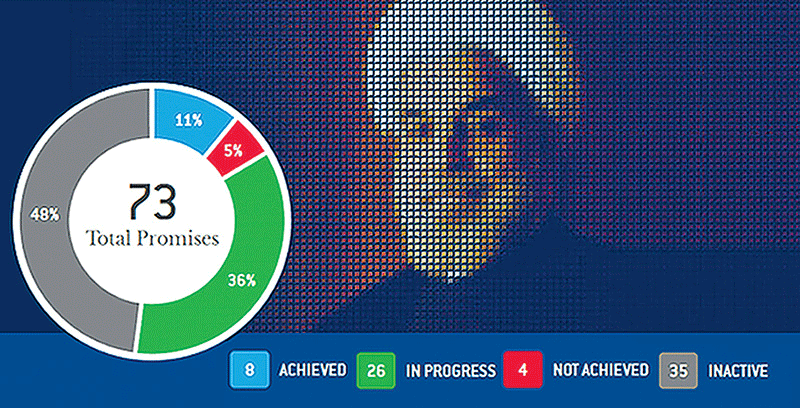
During the Arab Spring in 2011, social media use in some countries soared as citizens turned to Twitter and YouTube to spread news of protests. But governments also attempted to block Internet use, and in Egypt, for a time, the web was almost entirely inaccessible.
The Munk School of Global Affairs wants to ensure that people in the region and beyond can continue to share information about their governments online, and is expanding its successful program of “digital democracy” launched two years ago in Iran to other parts of the Middle East.
Shortly after Canada severed formal diplomatic relations with Tehran in September 2012, the Munk School reached out to Iranians directly. It developed and deployed powerful technology to help people get around government-instituted firewalls. It also built online tools to help citizens monitor their government’s performance. One such tool, the Rouhani Meter, compares the current president’s promises to his actions. The site is available in both English and Farsi and relies on visitors to submit evidence to show whether a promise has been kept.
In a country where the government routinely censors social media and, according to some reports, up to half of the 500 most popular sites on the web, the experiment had great appeal. All told, the Munk School’s various tools and platforms have attracted 4.5 million unique users.
Now armed with a $9-million grant from the federal government, the Munk School is using the lessons learned in Iran to create Digital Public Squares in other parts of the Middle East, notably northern Iraq and eastern Syria. The goal, says Janice Stein, project director, is to give people the tools they need to hold their own governments to account.
In Iran, this has meant providing access to information and forums for dialogue and dissent. It’s similar to the BBC Overseas Service during the Second World War when people tuned in at great risk – except that the current platforms are far more interactive. “People contribute knowledge, data, evidence, opinions,” says Stein, the Munk School’s former director. “We simply enable that conversation to take place.”
“The challenge,” she says, “is to find exactly the right tools that people will respond to and feel comfortable with.” Each country is different, and the Munk School will be working with academics, NGOs, civil society leaders and ordinary people to create systems appropriate to each local culture. The school wants to reach as many people as possible. “The greater the engagement, the more we know we’re asking appropriate questions,” says Stein.
For people in the target countries, online participation is not without its risks. In Iran, for example, bloggers and even Facebook page administrators have been arrested. But the Munk School wants to ensure the benefits to users outweigh the risks. It has promised to destroy the IP addresses of all participants and hopes to teach people the best ways to increase anonymity and security online.
Not only is free speech inherently valuable, says Stein, it has tangible benefits. Whether it’s public health or economic growth, she says, “Open societies do better on every measure of welfare.” – Brent Ledger
Saving Christianity’s Early History
Research on centuries-old inscriptions in Iraq will ensure valuable religious history is not lost to ISIS

Physical records of the 1,800-year-old Christian community in Iraq, threatened with destruction by sectarian war, will live on to be studied by scholars, thanks to work by a U of T professor.
More than a decade ago, Amir Harrak, of the department of Near and Middle Eastern Civilizations, spent four summers in Iraq taking photos of inscriptions in Syriac. A dialect of Aramaic, the language spoken by Christ, Syriac is also traditionally used in the literature and ritual of Iraqi Christians. Christianity in Iraq dates to at least the second century AD, and some of the inscriptions – pieces of text and art engraved in churches, monasteries and other monuments – are at least 1,300 years old.
Thanks to Harrak, U of T now has the world’s largest collection of photos of Syriac inscriptions from Iraq. His photos have been published by France’s Académie des inscriptions et belles-lettres, a learned society devoted to the humanities, and last year, the Canadian Centre for Epigraphic Documents, located on the U of T campus, began putting the entire collection on its website, allowing scholars around the world to study them with a few clicks of the mouse.
Harrak’s work may have saved many of these inscriptions from being forever lost to history. Since sweeping into northern Iraq last summer, Islamic State fighters have reportedly engaged in “cultural cleansing,” converting churches and monasteries into prisons, burning manuscripts and destroying religious sites – even shrines to Muslim saints. The group is also said to have stolen religious artifacts to fund its operations. Because of the scarcity of information coming from Islamic-State-occupied Iraq, Harrak says he can only guess about the current state of the inscriptions.
Many of the inscriptions record historical events in the region, such as invasions and epidemics. More importantly, Harrak says, the inscriptions tell us about the history of a branch of Christianity that is not only among the oldest, but also among the closest to Christ and the apostles – both linguistically and culturally. As Christianity spread westward across the Roman Empire, it came to be expressed in terms that would make it understandable to educated people, often borrowing ideas from Greek philosophy. But the Christianity that spread eastward to Mesopotamia, Harrak says, in some ways remained closer to its origins: in Iraqi Christianity, ideas are communicated much as they were in the gospels – in the form of parables and images rather than abstract theological systems.
For example, to explain how the Father, Son and Holy Spirit can all be one God, Christians in the late Roman Empire came to describe them using the term “consubstantial” – of the same substance – from the Greek homoousios. In Iraqi Christianity, Harrak says, their relationship was often explained by comparing these three to the sun’s heat, fire and light.
Some of these ideas are preserved only in the inscriptions, set as they are – quite literally – in stone. “There are some religious concepts that survived inscribed on stones whereas they are lost in manuscripts,” Harrak says. – Tali Folkins
Asia and Australia
Listening for E.T.
A massive new telescope could yield insight into how life forms and whether it exists elsewhere in the universe
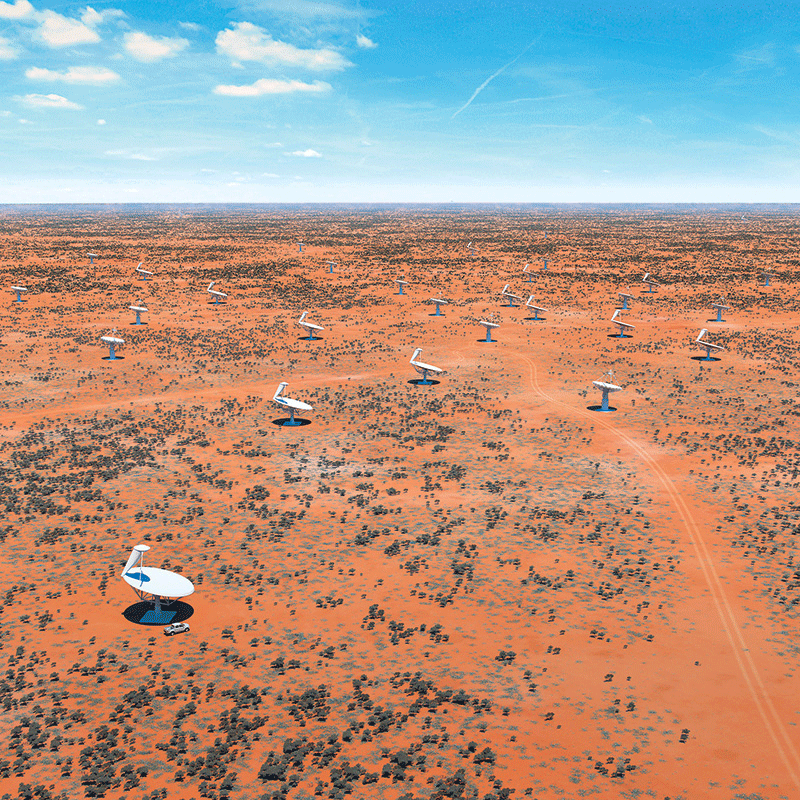
When you’re building a telescope, size matters – and an ambitious new radio astronomy project known as the Square Kilometre Array is all about size. The vast multinational project, now under construction on two continents, is due to begin scanning the sky in 2018.
The array will consist of thousands of individual antennas, located in southern Africa and western Australia. When used in unison, the antennas will simulate a giant telescope with a collecting area of one square kilometre – offering 50 times the sensitivity of any previous radio instrument.
Bryan Gaensler, director of the Dunlap Institute for Astronomy and Astrophysics at U of T, is part of an international team that will use the Square Kilometre Array to study the origins of magnetism in the universe – at this stage, a complete mystery. Understanding the workings of magnetism on a cosmic scale will help us understand other crucial questions in cosmology and astrophysics, Gaensler says, from star formation to the creation of the complex organic molecules required for life.
The telescope array is also poised to shed light on dark matter and dark energy, to probe the universe’s large-scale structure, and to test Einstein’s theory of gravity near black holes. It could spot planetary systems around other stars, and detect the chemical signatures of life beyond earth. And if ET happens to phone home – or happens to phone anyone in our direction, using radio waves – it could potentially spot that, too.
Eleven countries are participating in the billion-dollar project. Canada is taking part through the National Research Council in partnership with a half-dozen universities, including U of T – a key partner whose researchers are already working on prototype telescopes that will demonstrate technology vital to the array.
“Right from the beginning, it was realized that it had to be an international project,” says Gaensler, who is also the chair of the array’s Canadian Advisory Council. “There’s been this wonderful spirit of co-operation and collaboration from around the world.”
Once it’s running, the array is going to generate enormous amounts of data, spewing out more zeroes and ones each second than the entire Internet generates today. There’s no way to store that much data, so scientists – including Gaensler – will be developing artificial intelligence algorithms that can process the numbers in real time – throwing away most of the data, and just keeping the “interesting” bits. “The computational problem is insane,” he says. – Dan Falk
Caring for China’s Elderly
Twenty years ago, social work was a foreign concept in China. Not any more, thanks to one U of T prof
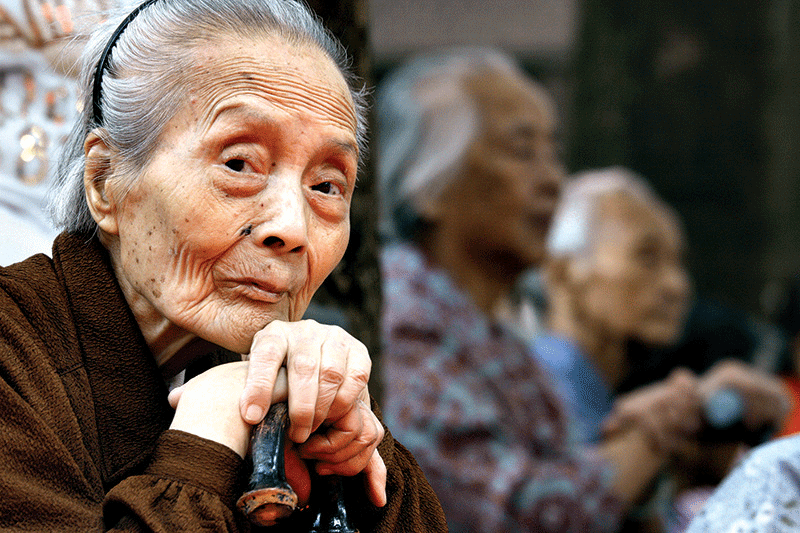
When Prof. Ka Tat Tsang first brought the idea of social work to China almost 20 years ago, it was a tough sell. The Cultural Revolution had occurred only a few decades earlier and the economic reforms of the 1980s were only just taking off. Social work was literally a foreign concept. Today, however, there is an established infrastructure of texts, teachers and institutions – thanks in part to U of T.
“We have definitely made a significant contribution to the creation of the first generation of Chinese social work scholars and educators,” says Tsang, a professor in the Factor-Inwentash Faculty of Social Work and director of the China Project, a two-pronged effort aimed at both communities in China and Chinese communities in Canada.
As a result of China’s one-child policy, introduced in 1979, there are a lot of older people who now depend on relatively few working adults for support – and many young people caring for aging parents. “They need effective strategies to deal with their elderly service,” says Tsang. The one-child policy has also made it tougher for many Chinese to form long-term relationships, as there are fewer young people in the “dating pool.” One of U of T’s social work graduates now runs workshops in Shanghai about how to meet and date people.
Tsang visits China at least twice a year and works with leading institutions, including the universities of Peking and Tsinghua in Beijing. Increasingly, he also works closely with front-line service providers such as NGOs and health-care systems. Recently he visited an orphanage in the Muslim autonomous region of Ningxia, where he emphasized the importance in children’s development of acquiring skills and life strategies. In 2008, he organized a team of mental health professionals to help victims of the massive earthquake in Sichuan Province. He’s also worked – through the Canadian consulate – with labour activists in south China, to help with training, leadership and community development.
Much of Tsang’s effort involves disseminating the principles of his own system of therapeutic change. Called Strategies & Skills Learning & Development, it emphasizes people’s ability to change through skills acquisition, and it has been used to meet a variety of social challenges, from urbanization to aging, in both China and Canada. Tsang notes that the Chinese population in Canada is better served than other immigrant communities, but not as well as the mainstream. Together with other academics, he’s now looking at the experience of mainland Chinese immigrants to Canada. – Brent Ledger
Keeping Speech Free in India
Law students work with writers and journalists in Delhi and Mumbai to ease India’s limits on freedom of expression
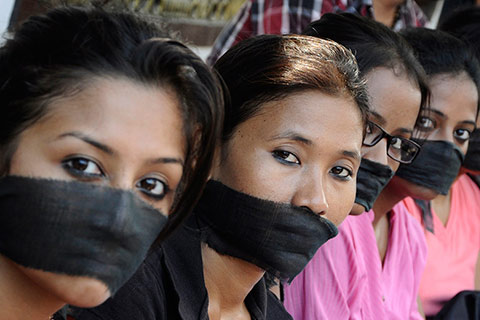
India has long been seen as a regional leader in human rights protection. But free speech is under attack in the world’s largest democracy. Newspapers have recounted numerous attempts by state and private interests to intimidate and censor writers and academics, and a recent UNESCO report named India among the 10 most dangerous countries in the world to be a journalist.
The situation has prompted the Faculty of Law’s International Human Rights Program to team up with PEN Canada and PEN International to study media freedom in India. (The two organizations have joined forces before to study free speech in Honduras and Mexico.) Last year, a pair of law students spent two weeks in Delhi and Mumbai, working alongside PEN representatives, speaking to lawyers and judges about challenges to free speech, and to writers and publishers affected by government censorship.
Although India’s constitution guarantees the right to free speech, a complex web of laws provide at least seven criminal laws and numerous regulatory offences that allow censorship of speech, says Renu Mandhane, executive director of the faculty’s International Human Rights Program. Speech in India can be censored, for example, on the grounds that some people find it offensive.
As part of the program, the students spent several months reviewing relevant Indian and international case law, and then learned through their visit how the issues play out on the ground. “The whole point of the project for students is to get beyond the case law research,” says Mandhane.
In May, PEN and the human rights program will jointly release a fact-finding report on India’s limits on freedom of expression – entirely researched and written by students – that will suggest repealing and amending existing laws. The report will also make recommendations to stem police and judicial corruption, and to build solidarity among writers, journalists and bloggers.
”This has been a defining experience for our students,” says Mandhane, “who are involved in every step of the project.” Amy Tang, a third-year law student who travelled to India last year, said she gained hands-on experience and skills that she will be able to apply to law – or to any profession. “It’s had such an incredible influence on my life and the lawyer I want to be.” – Alice Taylor
South and Central America
A Depressed State
A U of T prof is helping Nicaragua address high rates of suicide and psychiatric illness by taking mental health information directly to youth
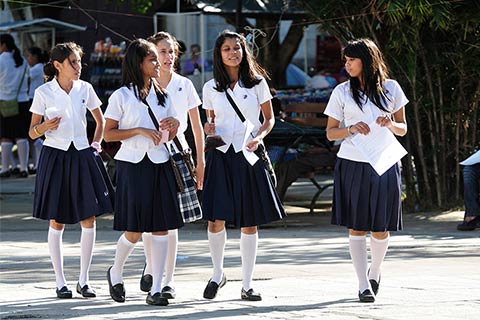
When young people experience anxiety, depression or suicidal thoughts, they often aren’t sure where to go for help. Many don’t even ask. So Arun Ravindran, a professor in U of T’s psychiatry department, came up with a novel but straightforward idea: take information about mental health to them by embedding it into the high school curriculum.
Ravindran is testing the approach right now in a research project with colleagues from the National Autonomous University in Nicaragua – the country with Central America’s highest suicide rates.
“We wanted to see whether we can improve the wellness of high school and university students through prevention,” says Dr. Ravindran, who is also a senior scientist at Toronto’s Centre for Addiction and Mental Health.
Most cases of depression or anxiety begin in the late teenage or early adult years. To reach this group, Ravindran and his research team first translated relevant materials and adapted them for the local culture. Then they trained teachers in Leon, Nicaragua, on how to use the materials to inform students about mental health, mental illness and stigma, and how to improve wellness through lifestyle. The researchers supplemented these in-class sessions with an online platform, designed to appeal to youth. Teachers were also trained to identify students with mental health needs and refer them to local clinicians.
One of the poorest nations in the Western Hemisphere, Nicaragua’s recent history includes a complex mix of street violence, civil war and natural disasters. The country shows elevated rates of post-traumatic stress disorder, substance abuse and family turmoil, with youth aged 15 to 24 the most likely age group to suffer from psychiatric illness and addictions.
Ravindran says the program’s results – measured through student focus groups and questionnaires completed both by students who took part and those who did not – have been encouraging. Program participants show improved understanding of mental health, visits to clinics have increased, and students and teachers are both enthusiastic. Administrators now want to expand the program to other parts of Nicaragua.
“Using the schools to reach students before they require treatment is not only better for their well-being, but it’s also cost-effective,” says Ravindran. “Our hope is to expand the program to countries in the region with similar problems, such as El Salvador and Guatemala.” He adds that the program could also be adapted for use in Canada, where mental health is generally not part of the high school curriculum. – Claire Morris
Welcoming Brazil’s Best and Brightest
In hosting dozens of Brazilian science students each year, U of T is building academic ties with a country that has huge potential for growth

Luis Eduardo Abratti always wanted an opportunity to study abroad. But for the life sciences student from southern Brazil, cost was prohibitive. “Unfortunately my parents were unable to afford this kind of investment,” he says.
That changed in 2011 when the Brazilian government launched Ciência sem Fronteiras (Science Without Borders), a program to send more than 100,000 Brazilian students overseas to study science, technology, engineering and mathematics.
U of T has received the lion’s share of Canadian placements, hosting more than 500 students to date. For Abratti, the program provided an opportunity to take advanced genetics courses and work in a cell and systems biology lab far more sophisticated than any he’d seen. “The laboratories at U of T are simply mind-blowing,” he says.
When he returns to Brazil, Abratti will be able to work with researchers there to develop similar state-of-the-art facilities. “There are benefits beyond international exposure and experience,” says Miranda Cheng, director of U of T’s Office for International Experience. “Students can share their knowledge and prepare for leadership roles.”
U of T also stands to gain from nurturing its relationship with a country whose academic workforce has grown significantly in recent years. U of T researchers from medicine, nursing, engineering and forestry have organized joint conferences and co-authored papers with their Brazilian counterparts, resulting in innovative research and discovery for both countries. Science Without Borders adds another dimension to this mutually beneficial relationship.
Engineering student Mateus Lemes de Aguiar, for example, spent part of the program prototyping a bricklaying robot designed to improve the efficiency of masonry construction and to decrease the risk of accidents. De Aguiar worked under the supervision of Prof. Kamran Behdinan, of mechanical and industrial engineering, to develop the technology.
Upon returning to Brazil, many of the students introduce their home professors to the profs they met at U of T for potential future collaborations. They also spread the word about Canada and U of T as a destination for Brazil’s brightest students. As Cheng says, “In a short time, U of T has developed a large pool of ambassadors who will help deepen our connections to Brazil.” – Anjali Baichwal
Fighting Electoral Fraud
U of T researchers discover two conditions that allow vote-buying to flourish in Brazil
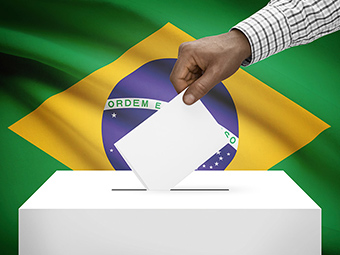
In Canada and many other established democracies, people vote freely for the candidates they prefer. There’s no risk of losing your job, being denied health care, or seeing family members threatened with violence for choosing the “wrong” person. And you don’t stand to win any special favours for voting for the “right” person.
But in countries that have only recently become democracies, politicians may seek to influence voters in exactly these ways. Candidates may offer individual voters money or goods in exchange for their support. And, as U of T researchers have found, certain kinds of voters are more susceptible to these electoral “bribes” than others.
Gustavo Bobonis, a U of T economics professor and Canada Research Chair in the Political Economy of Development, and Marco Gonzalez-Navarro, an economics prof at U of T Scarborough, have been studying “vote-buying” in 40 communities in northern Brazil in an effort to learn more about how the process flourishes.
Not surprisingly, the researchers found that vote-buying tends to diminish when living standards improve. The U of T team tested this theory by partnering with an NGO that was installing water cisterns for some of the disadvantaged households in the communities being studied. Access to a private source of fresh water provides huge health benefits when the alternative is a polluted river.
After a municipal election, the team conducted interviews with the households that received the new cisterns. “What we found is that they were much less likely to sell their vote after the cistern was installed than before,” says Bobonis.
This suggests that national policies or other measures to improve well-being and socio-economic status would reduce vote-buying in new democracies.
The researchers also found that an individual’s social preferences strongly influence their susceptibility to vote-buying. People who believe in reciprocity – the idea that “if I do something good for you, you should do something good for me,” are much more likely to sell their vote than those who don’t. “A person’s view of how they should interact with others can determine whether they want to engage in this type of relationship with politicians,” says Prof. Bobonis.
In small, close-knit communities, especially, local politicians are able to target voters who believe in reciprocity because most people have grown up together and know each other. – Claire Morris
North America and Europe
The Big Melt
How will global warming and retreating sea ice affect marine life along Arctic coastlines?
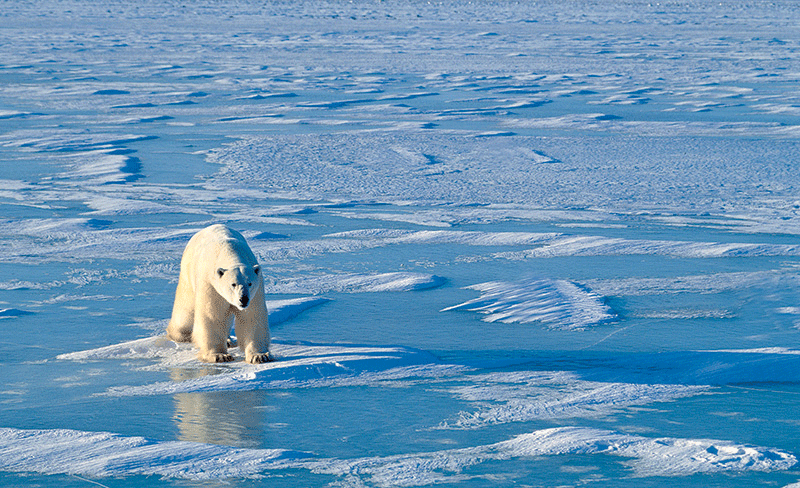
By the end of this century, the average world temperature is expected to increase between one and four degrees, with widespread effects on rainfall, sea levels and animal habitats. But in the Arctic, where the effects of climate change are most intense, the rise in temperature could be twice as much.
Understanding how Arctic warming will affect the people, animals, plant and marine life and economic activity in Canada’s North are important to the country’s future, says Kent Moore, an atmospheric physicist at U of T Mississauga who is participating in a longterm, international study of the marine ecosystem along the Beaufort Sea, from Alaska to the Mackenzie delta.
The study will add to our knowledge of everything from the extent of sea ice in the region to how fish stocks will change to which areas could become targets for oil and gas exploration to the impact on the indigenous people who call this part of the country home.
Moore, who has worked in the Arctic for more than 20 years, says his research has already found that thinning sea ice and changes in wind patterns are causing an important change in the marine food chain: phytoplankton is blooming two to three weeks earlier. Many animals time their annual migration to the Arctic for when food is plentiful, and have not adapted to the earlier bloom. “Animals’ behaviour can evolve over a long time, but these climate changes are happening in the space of a decade rather than hundreds of years,” says Moore. “Animals can’t change their behaviour that quickly.”
The data Moore is gathering will also help fill in gaps in our current climate models. When sea ice is smooth, for example (as thinner ice often is), wind speed tends to be faster, but the exact relationship between the two is poorly understood. The models also don’t properly take into account differences over a small area. Patches of open water within sea ice can have a significant impact on the local climate, says Moore. “Until we get all these things right, we won’t get an accurate read on how the climate is changing.”
A warmer Arctic is expected to have important effects on human activity in the region, as the Northwest Passage becomes navigable during the summer, and resource extraction becomes more feasible. Information gained from the study will help government, industry and communities make decisions about resource management, economic development and environmental protection.
Moore says the study – which involves Canadian, American and European researchers and government agencies – will also use a novel technology to gather atmospheric data: remotely piloted drones. “The drones have the capability of a large research aircraft, and they’re easier to deploy,” he says, allowing the researchers to gather information on a more regular basis than they would be able to with piloted aircraft. – Scott Anderson
Urban Eating
By looking to places such as India and Singapore, Toronto could create a much more vibrant culture and economy around food

For many people around the world, food plays a central role in culture. What we eat and how we prepare it helps define who we are. For many, it’s also a means to earn a living. In Canada, new immigrants often open – or work in – restaurants that serve food from their homeland.
In 2012, several UTSC faculty members, with academic partners in New York, Singapore, Delhi, Hong Kong and Sydney, launched an international collaboration called “City Food: Lessons from People on the Move,” with the goal of examining the cultural, economic and nutritional significance of food in cities. They hope to apply insights from the project locally in Toronto.
“Food is an economic and cultural driver of communities, especially in diverse ones such as Toronto, and in the diverse neighbourhoods near UTSC,” says history professor Daniel Bender, a participant in City Food. Drawing directly on the insights of this project, Bender and several UTSC colleagues have created courses in which students conduct food-related research in Scarborough neighbourhoods. The faculty members have also formed a hub at UTSC for food studies called the Culinaria Research Centre.

The group has a particular interest in street vending and is hoping to draw on the experiences of City Food’s partner cities to gain more insight into the debate over food trucks in Toronto. The conversation in Toronto has devolved to being about “quirky meals for downtown hipsters,” says Bender, when it should be a broader discussion about culture, entrepreneurship and how food is regulated in the city. “The crucial conversation around food trucks in Toronto is one that finds a way for ordinary people to start new businesses with very little capital,” he says.
Street food, a form of low-capital entrepreneurship, plays a crucial role in local economies worldwide. In Toronto, embracing street food in this way could provide both economic benefits and a deeper understanding of Toronto’s myriad diverse cultures. “By thinking of street food in new ways and understanding how it is integrated in other parts of the world,” says Bender, “we can turn the process of eating into a very powerful way to build cross-cultural relationships while encouraging entrepreneurship opportunities within our diverse community.” – Anjali Baichwal
A Secret World Beneath the Earth
Hydrogen-rich waters trapped kilometres below much of the planet’s crust may support extreme forms of life
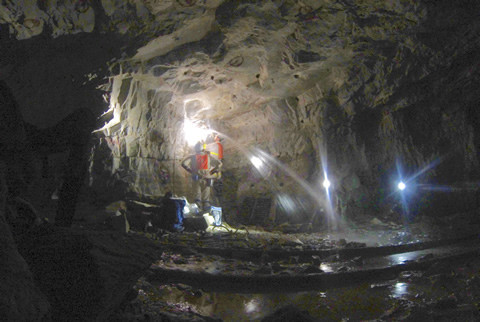
There may be much more hydrogen-rich water trapped in rock fractures kilometres beneath Earth’s surface than previously thought, according to an international study led by U of T’s Barbara Sherwood Lollar.
This is important because the chemistry of these ancient waters, common in the oldest rocks on Earth, is similar to that found near deep-sea vents, which can support microbial life. And this has implications for where life may exist elsewhere in the universe.
The study included data from 19 different mine sites in Canada, South Africa and Scandinavia that were explored by Sherwood Lollar, a geoscientist at U of T’s department of Earth sciences, and by colleagues at U of T and Oxford and Princeton universities.
The scientists also studied how two chemical reactions combine to produce substantial quantities of hydrogen, doubling estimates of global production from these processes, which had previously been based only on hydrogen coming out of the ocean floor. “This represents a quantum change in our understanding of the total volume of Earth’s crust that may be habitable,” says Sherwood Lollar.
Since these oldest rocks make up more than 70 per cent of the surface of Earth’s crust, Sherwood Lollar likens these terrains to “a sleeping giant – a huge area that has now been discovered to be a source of possible energy for life.”
Quantifying global hydrogen production is crucial to understanding the amount of the Earth’s biomass that lies below the surface. Many deep ecosystems contain chemolithotrophic – so-called “rock-eating” – organisms that consume hydrogen.
Because major sections of Mars – like much of Earth’s crust – consists of billions-of-years-old rocks with hydrogen-producing potential, this finding has ramifications for astrobiology. “If the ancient rocks of Earth are producing this much hydrogen, it may be that similar processes are taking place on Mars,” says Sherwood Lollar. – Kim Luke
Recent Posts
U of T’s 197th Birthday Quiz
Test your knowledge of all things U of T in honour of the university’s 197th anniversary on March 15!
Are Cold Plunges Good for You?
Research suggests they are, in three ways
Work Has Changed. So Have the Qualities of Good Leadership
Rapid shifts in everything from technology to employee expectations are pressuring leaders to constantly adapt





3 Responses to “ U of T’s World Wide Web ”
I had to write to tell you that whoever redesigned and is also editing the newsletter is doing a very good job. I enjoy reading this digital version with the multiple links to other sites and videos fleshing out the topics covered -- some of which I did not even think to wonder about. Keep up the great efforts here.
I would like to commend Scott Anderson on doing the impossible – writing a completely uncontroversial and apolitical article on climate change.
The author states rather euphemistically that melting sea ice will have “important effects” in the region. These effects could be better described as “catastrophic” – and not just for the Arctic, but for the entire planet.
Opportunistic companies and governments want to extract resources from this new frontier, and will no doubt use scientific research to achieve their goals. This makes it all the more important for members of the scientific community to refuse to conduct research on behalf of these industries.
Moreover, U of T itself should immediately begin the process of divesting its portfolio completely of companies involved with fossil fuels. It is my hope that the university will fall on the right side of history on this issue, and set an example for other institutions.
Nicholas Clayton
BMusPerf 2001, BEd 2003 OISE
Brampton, Ontario
Prof. Kent Moore responds:
Scientists are in a tough bind, we need funds to support our research and those funds often come from governments. What governments or other organizations do with our research is out of our hands. Hiding one’s head-in the sand will not prevent the research from being done or resources from being extracted. What I believe scientists need to do is make sure that the results of their research are widely disseminated and to engage with end users to make sure that the results are used in ethical and environmentally responsible ways.